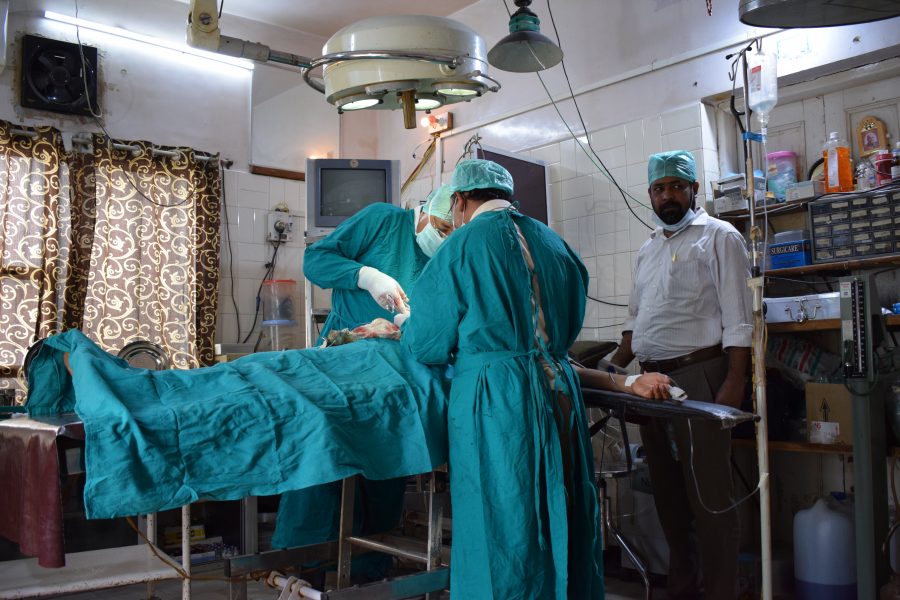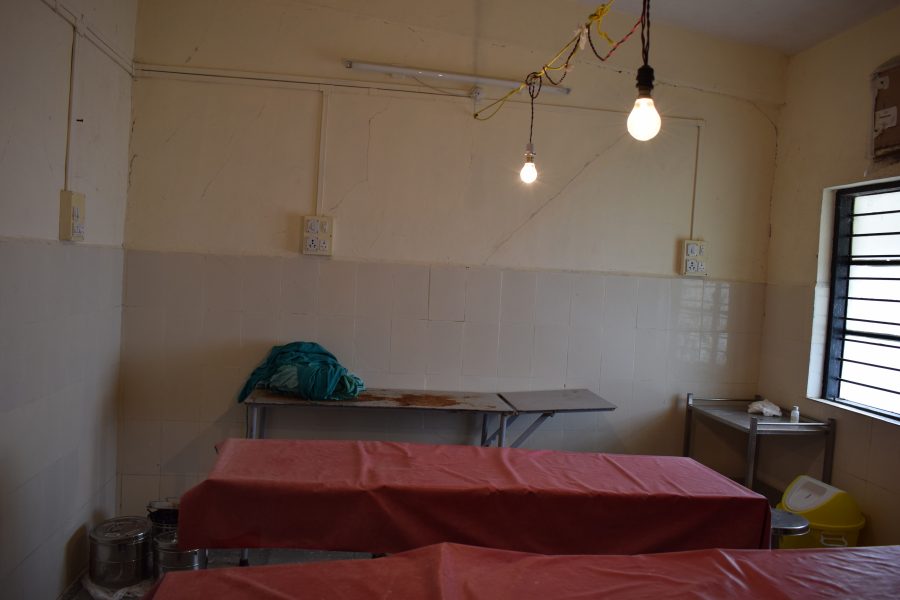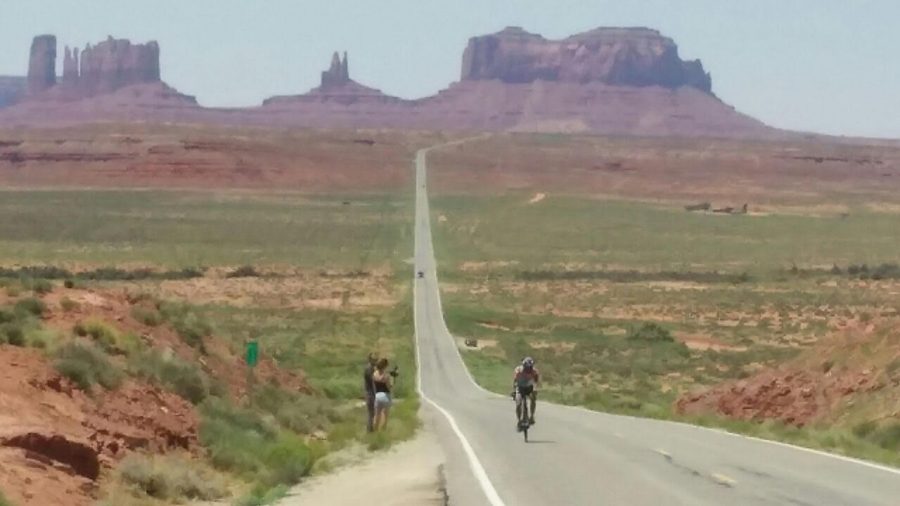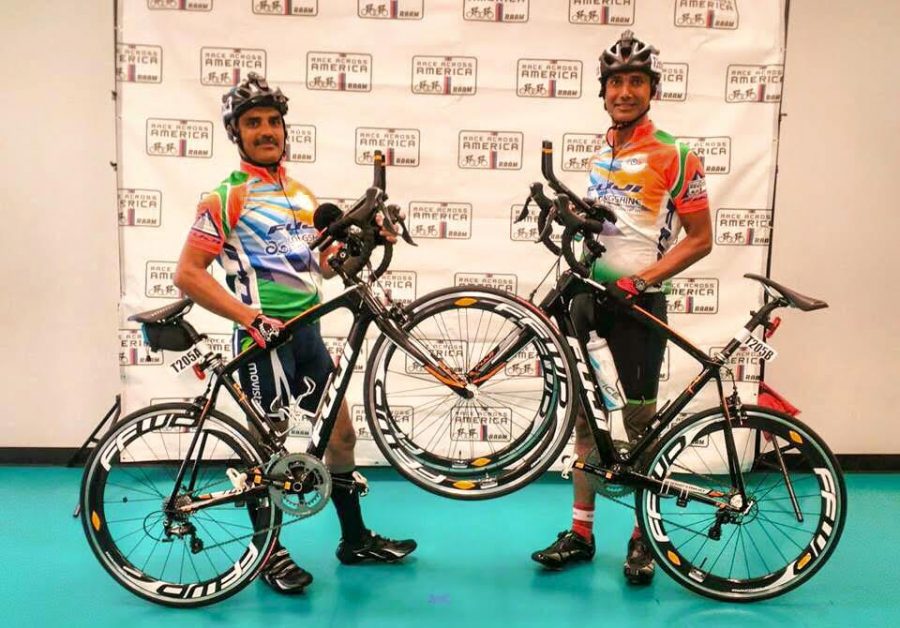Putting in the miles for safer anaesthesia
An avid cyclist and the first Indian to win the world’s toughest endurance race, he’s the president of the Indian Society of Anaesthesiologists (ISA) Maharashtra chapter and an associate professor at NDMVP Medical College, Nashik. Happily for us, he’s also a member of the Lifebox training faculty in India – with some stories to tell.
Tell us about the challenges that anaesthesia providers face in providing safe surgical care in your region.
The set up where I am working is well-equipped. But most of the set ups where my colleagues are working, struggle – especially with infrastructure in the operating theatre and post-op rooms. Many hospitals still work with the old Boyle’s machine and Goldman Vaporiser to deliver anaesthesia. They have a limited supplies of gases, drugs, and equipment.
Another issue is a shortage of trained staff. The anesthesiologist has to work alone, or with someone trained on the job. But in spite of all this problems our colleagues try their best to deliver safe anaesthesia care.
The real challenge is post-operative – the limited resources, and continuous concern when you don’t have proper monitors and trained staff. The anaesthesiologist is often visiting, and leaves the premises once the patient is completely out of anaesthesia. But post-op patients need close monitoring too, and in many hospitals there’s no trained staff for that. Also no monitors. It’s the visiting anaesthesiologist who carries his own monitor. At most, the hospital might have a simple finger probe.
What do you hope will be achieved by working with Lifebox?
Most of the problems we see with post-op patients are related to hypoxia or hypotension. So the type of training given through the Lifebox workshop will benefit all concerned staff, helping to prevent these complications and making intra-op and post op care safer.
The donation of pulse oximetry will help staff to monitor the patient properly, leading to safer outcomes for the surgical patient.
Can you share a story of a patient whose life was changed by a safe operation?
In my 20 years as an anaesthesiologist, I’ve witnessed so many stories that show the importance of safety and communication in the preoperative period.
I still remember a case of pancreatic cancer, with the patient undergoing a whipple. It’s a huge procedure. At the end of the operation, the trolley sister gave the ‘ok’ on the instrument and gauze count, and the surgeon started closing the abdomen. But halfway through the closure, the sister realised a problem – she counted one less piece of gauze. She was in a dilemma, but thanks to teaching of safe surgery protocols, fear she apologised without fear, and informed the surgeon.
It was a moment of tension, but the entire team remained calm. I asked the surgeon to try to remember every place he could think to have put a gauze piece. When he gave it a thought, he realised he’d used one to control the bleeding. He reopened the half-closed abdomen, searched for the missing gauze piece and found it at the expected site.
Without shouting, the gauze piece was removed and we took a sigh of relief. Later on, everyone appreciated the frankness of the sister for accepting the fault and informing the team in time. Left behind in the abdomen, the patient would have developed a leak, leading to morbidity and maybe mortality.
Can you share a story of a patient whose life was saved by a pulse oximeter?
Here’s an incident which could have literally killed the patient if he hadn’t been wearing a pulse oximeter – and if I, the anaesthesiologist, hadn’t been present in the hospital.
It’s the case of a wrong drug injection. An hour after surgery to repair a tibia fracture, the patient, a young man, started complaining of pain. The surgeon ordered a routine dose of Voveran, an injected painkiller. Suddenly the sister came running to the operating theatre, where were working on another patient. The post-op patients saturation was falling, and he wasn’t responding.
I rushed over and found him not breathing. I intubated immediately, ventilated with an ambu bag, and asked the sister to show me what she’d given. It was Vecuron, a muscle relaxant used in anaesthesia.
Lack of post-operative training, poor communication and lack of a secure place for special drugs is to blame. But without pulse oximetry monitoring, it wouldn’t have been possible to diagnose the situation at an early stage. It could have lead to hypoxia and complete cardiac arrest, from where resuscitating patient would have been difficult or impossible.
What are your hopes for the future of anaesthesia in Maharashtra?
Things are improving rapidly. But still the insistence is on improving infrastructure inside the operation theater, where most of them now have good anaesthesia delivery machines and multiparameter monitors. Trained staff is the issue in small places, and the practical solution must be to train those available in basic safe post-operative care – using pulse oximeters and teaching them how to handle life threatening situations like hypoxemia, hypotension, and drugs.
We need to foster teamwork amongst visiting anaesthesiologists and the wider hospital team, working together to provide pre, intra and post-operative services that will make things safer for the patient. We’ll continue to develop faculty in Maharashtra, and our mission must remain: “safe anaesthesia saves lives.”
Why is partnership between NGOs and professional communities so important?
In my opinion, partnership between NGOs and professional communities is a must to achieve any goal effectively, uniformly and rapidly on a large scale.
For any professional community, bringing positive change has certain limitations. As an individual professional, or group of professionals, we can’t reach out uniformly, and we’re restricted by manpower and finances. But with the involvement of an NGO with aligned aims, scattered individuals can be brought under one umbrella. Limited resources can be utilised and generated to reach our goal.
You cycled 6000km through the golden quadrilateral in India, and were the first to finish the 4800 km race across America in 2015. A feat like that requires determination and courage. How would you say sports for charity and advocacy is seen in India, and what can be done to engage more people?
Yes, I proud to inform you that I, along with my brother Dr. Mahendra Mahajan, became the first Indian to win the world’s toughest endurance cycle race, RAAM – Race Across America in 2015. RAAM is the most prestigious race in the USA, going back 36 years. Riders start at the Pacific Ocean and reach the Atlantic Ocean – more than 3000 miles in just 9 days. We did it in 8 days 14 hours.
We also also set the Golden Quadrilateral Challenge record, cycling 6000 km from Mumbai to Chennai, Kolkata, Delhi and back in relay fashion, nonstop, over 10 days 19 hours. Both achievements were recognised by the Prime Minister of India, Mr Narendra Modi.
I am very to glad to say that our sporting achievements had a social goal. Being doctors, we always try to give back to the society from whatever activity we do. We cycled the RAAM as “Team India Vision For Tribals,” raising money to combat blindness among the tribal people around my town Nashik. In association with the Kalpataru Foundation our team of ophthalmologist friends, which includes my wife Dr. Anjana Mahajan, performed 300 cataract surgeries and 72 corneal transplant surgeries free of cost from the funds we raised.
No doubt, both our achievements required lot of courage and determination, as we did it as a hobby; ‘sports for charity’ in India is not that well-established. Most of the funds came from friends and self-funding. Still i will say it’s in infancy and will take time to grow. We are trying our best and as we will show success, we are hoping it will grow rapidly.





